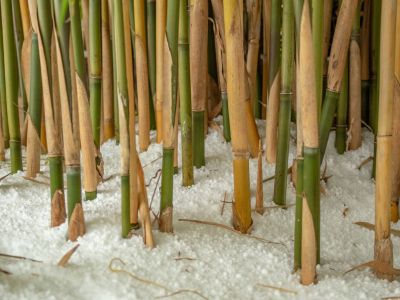Tips here refer to cold hardy runners, in the Phyllostachys species. This is likely what you’re growing in an area that has cold winters. Hopefully, you’ve chosen the right bamboo for your zone and one for a lower zone if it is grown in containers.
How to Winterize Bamboo
Bamboo takes the first three years of its life to get established. Once it’s made it through this timeframe, it will be able to better survive the cold season. Bamboo is recommended for planting in USDA Hardiness zones 5a to 10 plus. What steps do we take when protecting bamboo from cold? When planting bamboo in an area with freezing temperatures in winter, locate it in a spot away from north winter winds. Shelter it with a building or row of trees, if possible. This is a means of providing bamboo winter care ahead of time. Heavy mulch covering the growing area keeps soil temperatures warmer around the rhizomes from which it grows. Soil temperatures are not usually as cold as air temps and the mulch will keep it somewhat warmer still. Mulch also holds in moisture for longer, which may keep the soil a tad warmer. You can also use plastic to build a temporary hoop house or tent to protect the rhizomes. Anti-desiccant sprays add protection in some instances. Use them in combination with the above methods. Do everything possible to keep your plants healthy before winter arrives.
Protecting Potted Bamboo in Winter
Containerized bamboo plants need more protection than those growing in ground. Above ground containers don’t have the protection of being surrounded by soil, so rhizomes benefit from heat. Add heat by using soil warming cables. You may also insulate the container or bury it in the ground for winter. When possible, move the container into a protected area during the coldest times.
